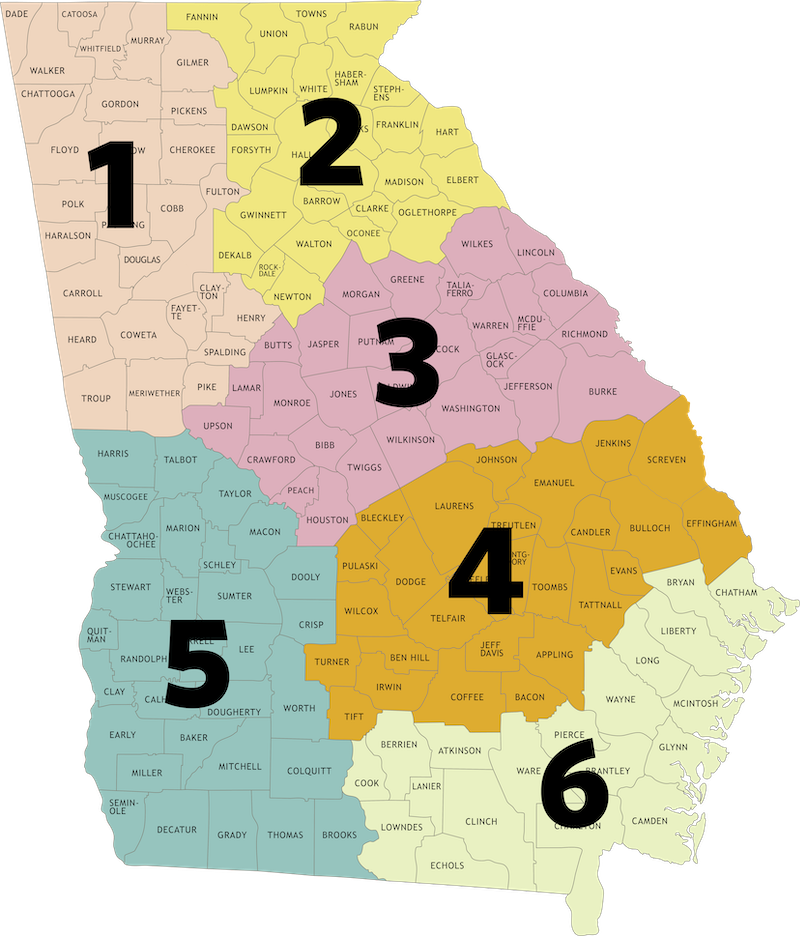The Georgia Department of Natural Resources’ Wildlife Resources Division (WRD) receives calls each year in reference to large cat sightings. Traditionally, there have been two recognized subspecies of cougar or mountain lion in the eastern United States. The eastern cougar is one of many common names (others being "panther," "catamount," "puma," and "painter") given to large cats that once lived throughout much of eastern North America. The U.S. Fish and Wildlife Service has recently proposed that the eastern cougar be considered extinct in the wild. To date, no credible physical evidence (carcasses, trail camera pictures, photographs, film footage, etc.) has been found to substantiate the existence of a population of mountain lions in Georgia.
Mountain Lion Information
The closest population of mountain lions to Georgia is the Florida panther with a population located southwest of Lake Okeechobee in South Florida.
Here are some additional facts:
- If viewing tracks, claw marks are not typically visible in the tracks of large cats since their claws are retractable. Any large print that contains claw marks were likely made by dogs, coyotes, or bears.
- Mountain lions are solitary animals and are rarely seen by people, even in areas where they are known to exist.
- In the last 25 years, there have been only three (3) credible mountain lion sightings in Georgia. These animals were all related to the Florida panther. The most recent and well-known situation involved a hunter in LaGrange, GA (Troup County) in 2008 who shot and killed a mountain lion while deer hunting. The large cat was later genetically shown to be a federally endangered Florida panther. The hunter was charged with a federal wildlife violation and sentenced to a $2,000 fine, 2-years probation, and was prohibited from obtaining a hunting license anywhere in the United States during the probation.
- According to a professional biologist with the Tennessee Wildlife Resources Agency, there are no confirmations of mountain lions in east Tennessee (21 most eastern counties).
If Not a Mountain Lion, What is It?
Most sightings of "mountain lions" are made from a distance, at night, or in an instance where the animal was only momentarily seen (such as rapidly crossing the road) or otherwise obscured. Occasionally, such sightings may include references to vocalizations. Mountain lions make little noise in the woods. When they do, they often sound like a person whistling or a bird chirping. Many people report hearing shrieks in the night and think those sounds are made by mountain lions, but almost always these “blood-curdling screams” are made by other animals. To provide some examples, here is a link to an audio file that compares various mountain lion sounds to those of several other animals commonly heard at night: https://mdc.mo.gov/wildlife/report-wildlife-sightings/mountain-lion-reports/mountain-lion-signs.
Big cat sightings usually turn out to be simply a case of mistaken identity: bobcats, house cats, dogs, coyotes, bears, or even river otters. Despite this fact, the WRD takes such reports seriously and gives them careful consideration, including follow-up and investigation, where appropriate.
There are a few facilities in Georgia licensed to possess captive mountain lions. Despite strict laws regulating possession, there have been instances in the past of illegally-held captive animals that escaped or were released illegally.
To report a mountain lion sighting, please contact the local Georgia Department of Natural Resources’ Wildlife Resources Division Game Management Section office at:
 Region 1: 706-295-6041
Region 1: 706-295-6041- Region 2: 770-535-5700
- Region 3: 706-595-4222
- Region 4: 229-426-5267
- Region 5: 229-430-4254
- Region 6: 912-262-3173
- Outside of regular business hours (M–F, 8:30 a.m.–4:30 p.m.), please use 800-241-4113.
Anytime an individual encounters any large wildlife, please be vigilant and maintain a safe distance. Other personal safety precautions include:
- Make yourself appear as large as possible. Raise your arms and wave them slowly.
- Make noise. Make loud sounds that cannot be confused as the sound of prey.
- Act like a predator. Maintain eye contact. Never bend over or crouch down.
- Slowly create distance. Without turning away, back slowly away to a safe distance.
- Protect yourself. If attacked, fight back.




















